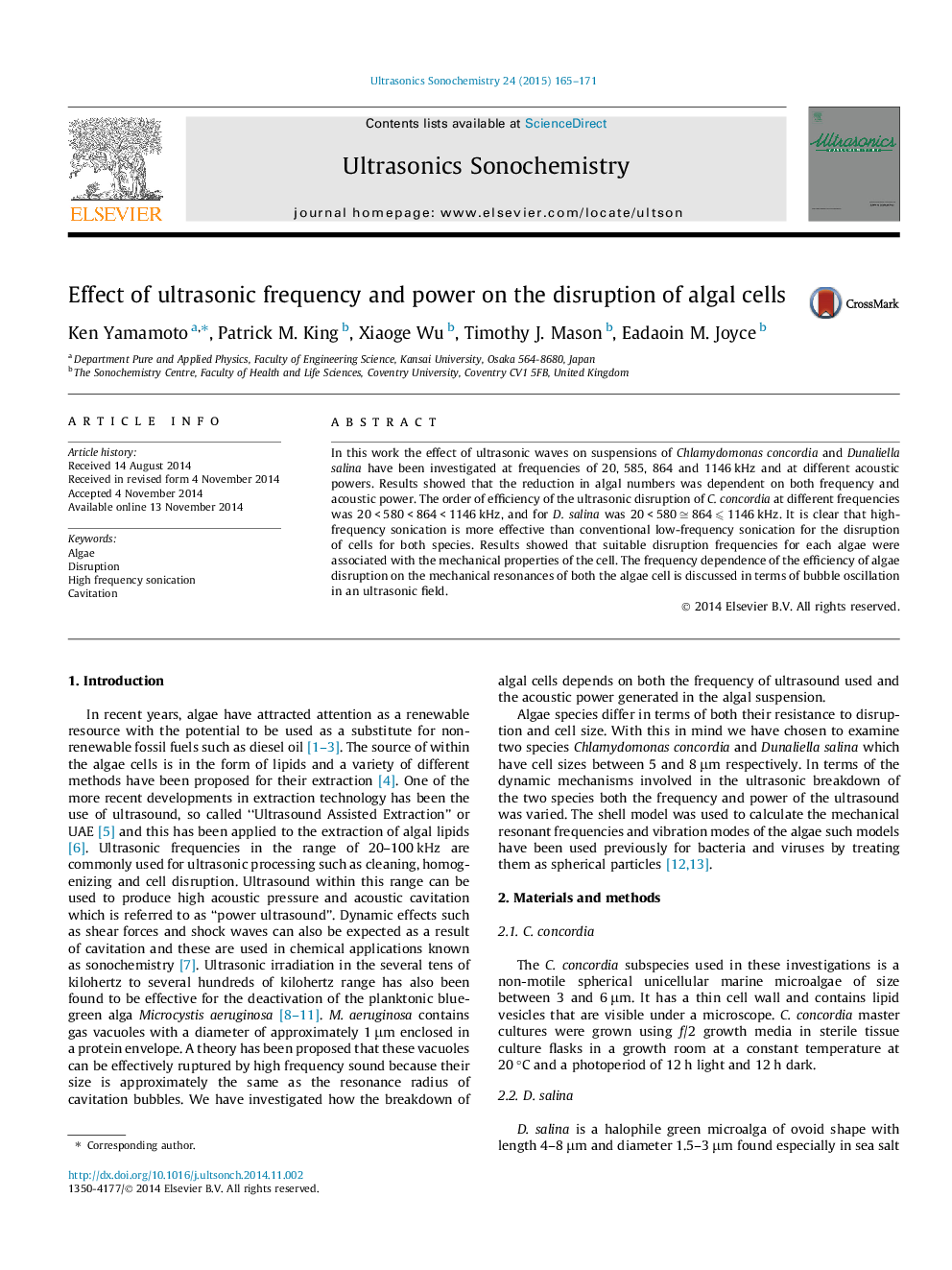| Article ID | Journal | Published Year | Pages | File Type |
|---|---|---|---|---|
| 1266709 | Ultrasonics Sonochemistry | 2015 | 7 Pages |
•The disruption of algae is dependent on both the frequency and acoustic power.•High-frequency sonication for algal cell is more effective than low-frequency.•Less energy is needed for disrupting D. salina than C. concordia at any frequency.•Suitable disruption frequencies were associated with the cell’s mechanical properties.
In this work the effect of ultrasonic waves on suspensions of Chlamydomonas concordia and Dunaliella salina have been investigated at frequencies of 20, 585, 864 and 1146 kHz and at different acoustic powers. Results showed that the reduction in algal numbers was dependent on both frequency and acoustic power. The order of efficiency of the ultrasonic disruption of C. concordia at different frequencies was 20 < 580 < 864 < 1146 kHz, and for D. salina was 20 < 580 ≅ 864 ⩽ 1146 kHz. It is clear that high-frequency sonication is more effective than conventional low-frequency sonication for the disruption of cells for both species. Results showed that suitable disruption frequencies for each algae were associated with the mechanical properties of the cell. The frequency dependence of the efficiency of algae disruption on the mechanical resonances of both the algae cell is discussed in terms of bubble oscillation in an ultrasonic field.
